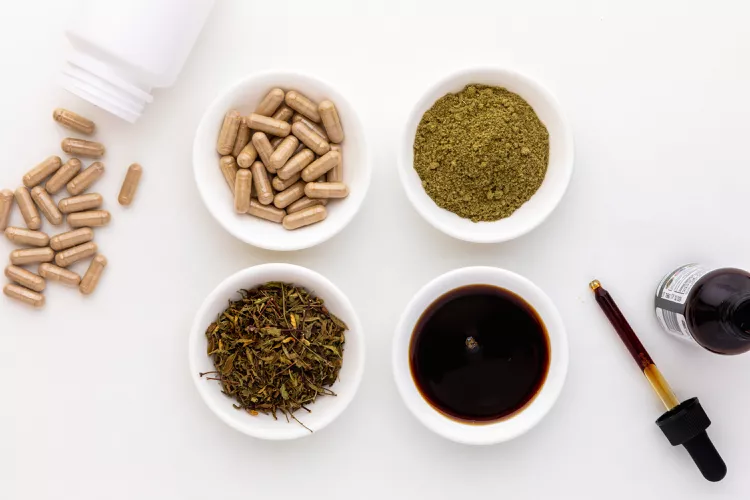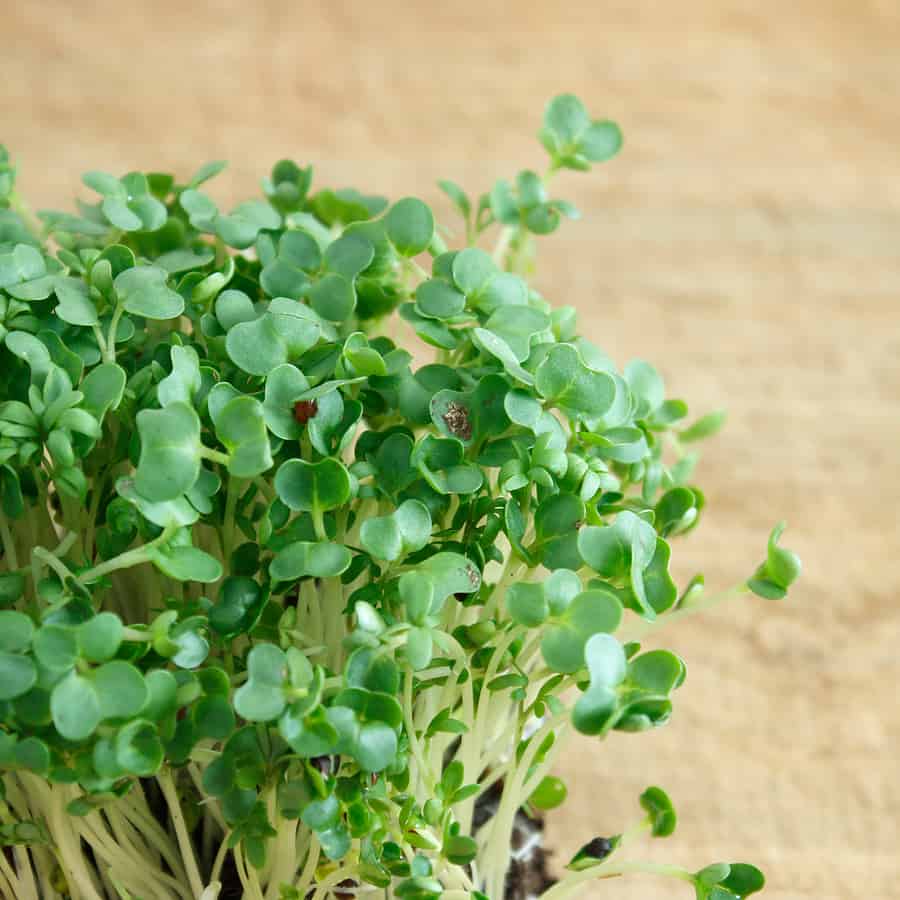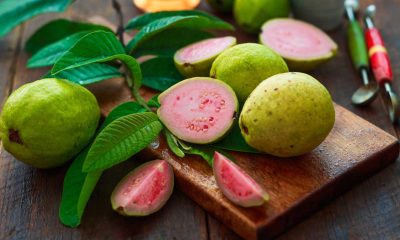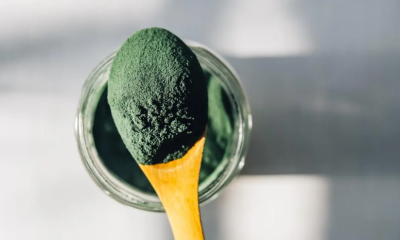Health
4 Benefits of damiana and side effects

Table of Contents
Discover the 4 shocking health benefits of Damiana and side effects.
Damiana (Turnera diffusa) is a shrub with green leaves and yellow petals born in America known as Mexican tea.
Its scientific name is Turnera diffusa, although others prefer to call it turnera, herba de la pastora, Rosemary or oreganillo.
Since ancient times, it has been attributed powers to enhance sexual appetite in men and women.
However, its medicinal capabilities are not limited to that, because it has properties that are beneficial to treat other diseases, would you like to know better the benefits of damiana?
What is damiana for?
Scientific name: Turnera diffusa
Family: Turneraceae
Species: T. diffusa; Willd. ex Schult.
Class: Magnoliopsida
Kingdom: Plantae
Division: Magnoliophyta
Damiana (Turnera diffusa) is rich in bioactive compounds, such as tetraphyllin B, arbutin, flavonoids such as gonzalitosin, and apigenin, it also contains damianin, which is its bitter principle, in addition to caffeine and beta-sitosterol.
Each of these substances gives damiana the attributes for the treatment of various conditions, although its effects on many diseases are under study.
However, many share the view that it imparts benefits, such as those that we will mention now:
Improves sexual activity
Its aphrodisiac gifts lie in flavonoids with anti-aromatase activity, as they help maintain testosterone levels, libido, energy, and muscle mass in mature men.
It stimulates the central nervous system
Its use has been suggested to combat nocturnal enuresis in children, which is often caused by nervous disorders.
On the other hand, it is considered a natural ally to mitigate the nervous states characteristic of perimenopause.
Helps treat gastric problems
It has been customary to use the infusion of damiana leaves to relieve gastric problems.
Its arbutin content, a glycoside with gastroprotective powers, is the main responsible for this characteristic.
Serves to combat fatigue
This prodigious medicinal plant stands out for having stimulating attributes that have been useful in relieving physical and mental fatigue.
Damiana properties
•Known as a virtuous aphrodisiac
•Has diuretic properties
•Considered a cleanser
•Has antiseptic qualities
•May be a laxative
•It is claimed to be a good expectorant
•It is a good stimulant
•Can be used as an energizer
Health benefits of Damiana
Turnera diffusa contains active principles that endow it with medicinal and healing virtues, such as the following:
1. Helps cure infections
Damiana performs a diuretic and antiseptic action, which contributes to the relief of urinary infections, such as cystitis and prostatitis, and is also used to treat the discomfort caused by kidney inflammation.
2. Elevate your spirits
It fulfills a function as a stimulating tonic for the central nervous system, which is why it is indicated to combat mild depressive states, lack of motivation, stress, dejection, and fatigue.
3. Increases sexual potency
Although it has been labeled an aphrodisiac and is presented as an excellent resource for correcting premature ejaculation, erectile dysfunction, and increasing sexual vigor, more conclusive studies are required to substantiate these claims.
4. It is invigorating
One of the most publicized properties of damiana is that it contributes to increasing energy, giving people greater well-being and willingness to perform daily physical activities.
How to use damiana
Due to its wide distribution, today it is not difficult to find damiana in different formats, in dietary centers, or in the pharmaceutical industry.
However, you must remember that although many therapeutic virtues have been attributed to it, they have not yet been scientifically established, so you must be cautious in their use.
Before deciding to include it as a treatment, common sense dictates that the approval of a specialist must be obtained, who will be able to indicate the correct form and dose to use it.
In the market you can get it in drops, tinctures, and capsules, now we will explain the destination that is customary to give each one.
Drops and tinctures.
The liquid extract of damiana is usually used for infusions, it can also be used with water or fruit juice, in the doses indicated on the product. It is claimed to increase sexual desire, as well as, alleviate depressions.
Capsules.
This is one of the most common presentations in pharmacies, and is generally used as an aphrodisiac to increase libido and is prescribed to calm tiredness and fatigue.
Although turnera is often sold as an herbal supplement, caution must be exercised to ensure that it is not contaminated with toxic metals or other drugs.
Therefore, the ideal is to obtain it in pharmacies, as they guarantee the use of reliable products.
Advantages and disadvantages of damiana
Didn’t you find all the applications that are given to this wild shrub interesting? Next, a synthesis of its advantages and disadvantages will be made.
Advantages of damiana
It is used to combat apathy, stress and improve mood.
It has been indicated to overcome not so severe depressive states.
It is considered a stimulant and sexual arousal for both sexes.
It has been useful to treat nocturnal enuresis, in the case of children.
It can help relieve nervous migraines, in combination with other herbs.
Helps fight urinary and kidney infections.
It is suggested to treat asthma and bronchitis.
Disadvantages of damiana
It should be avoided when a person is in conditions of anxiety attacks, suffers from chronic insomnia or tachycardia, as it can exacerbate the symptoms of these diseases.
It is not advisable to associate them with other plants that are stimulants, such as ginseng, Andean maca, coffee, or guarana.
Damiana is contraindicated in the case of pregnant women, lactating women, and children.
Precautions for consuming damiana
Even being a natural remedy, damiana is powerful medicine, due to its chemical components.
For this reason, pregnant women and those who are breastfeeding should refrain from using it, for the reason that it contains active alkaloids.
Along the same lines, damiana is not compatible with anxiolytic, antidepressant, or stimulant medications.
On the other hand, it is good to note that in high doses, this plant acts as a purgative.
Finally, it is good to note that for women with a family history of breast cancer or who have suffered from it, it is not recommended that they use it.
All of the above highlights the need for caution when using damiana, to avoid unpleasant consequences.
Related searches….
Damiana benefits hormones
How long does it take for damiana to work
Damiana for men
Damiana Leaf effects
How long does damiana Stay in your system
Damiana and ashwagandha together
How to use damiana
Health
Mosquito bite: The Miracle Cure Against It

Discover The Miracle Cure Against Mosquito Bite.
Have you been bitten by a mosquito again?
They have the gift of stinging us when we spend a quiet evening on the terrace!
And then, hello the itching!
We only want one thing, and that is to scratch ourselves to the point of blood. It’s super annoying!
Fortunately, my grandmother gave me her natural remedy to quickly relieve a mosquito bite.
The miracle trick is to apply a paste of baking soda and witch hazel water. Look :
What you need
- baking soda
- witch hazel water
- cup
How to do
- Put three teaspoons of baking soda in a cup.
- Pour a teaspoon of witch hazel water
- Mix to obtain a paste.
- Apply the paste to the bite.
- Leave on.
Results
And there you have it, thanks to this remedy, you have stopped the itching of mosquito bites in their tracks 🙂
Easy, fast, and efficient, isn’t it?
It is a simple treatment that makes the sting deflate and disappear quickly!
This remedy is completely natural and very gentle. It is ideal for the fragile skin of children and babies.
And you don’t even need Apaisyl cream … it’s much more economical that way.
In addition, it works for all insect bites: mosquitoes, spiders, horseflies…
Why does it work?
Baking soda soothes the itchiness. It acts as an antiseptic and disinfectant. It thus calms the inflammation caused by the sting.
Witch hazel water also disinfects the sting and soothes the itchy sensation.
It also refreshes the skin and heals the irritated part thus bringing an immediate feeling of well-being.
We also find witch hazel in the composition of calming gels after insect bites from Hansaplast.
What is witch hazel?
Witch hazel is a plant native to North America.
Witch hazel water comes from the indirect distillation of dried witch hazel leaves. It takes about 60 kilos of leaves to get a thousand liters of water.
The many benefits of witch hazel have been recognized for a very long time.
It helps disinfect wounds. Applied in massage, it is an effective venous tonic and stimulates blood circulation.
It also has anti-inflammatory properties and as such, it relieves rheumatic and arthritis pain.
It is also an asset in your beauty kit. Used in rinsing water, it eliminates dandruff.
Finally, it is also found in perfumery, because its smell is very pleasant. It is similar to that of cut grass with a hint of mint in addition.
Health
17 Benefits of Garden Cress You Never Dreamed of

Table of Contents
Health
6 Benefits of asparagus and side effects

Table of Contents
- Asparagus Properties
- Health Benefits of Asparagus
- Nutritional Value of Asparagus
- Side effects of Asparagus
- Discover the 6 Benefits of asparagus and side effects .
Asparagus is a commonly consumed vegetable in many parts of the world. It is well known for its unique and tasty taste. It can be eaten raw or cooked.
It is a good source of folate, vitamin K, iron, and fiber. This makes it valuable during pregnancy and means that it can contribute to heart health and the prevention of osteoporosis.
Asparagus Properties
Asparagus is a good source of folate, vitamin K, and fiber, among other nutrients.
One cup of asparagus contains less than 30 calories.
It can be steamed and drizzled with olive oil and garlic as a side or ingredient in a main dish.
Health Benefits of Asparagus
Fruits and vegetables of all kinds are linked to a lower risk of many lifestyle-related diseases, such as type 2 diabetes, obesity, heart disease, some cancers, and general mortality. It can also increase energy levels, complexion of skin and hair.
Asparagus is one of the top 20 foods included in the Added Nutrient Density Index (ANDI). The index aims to give an idea of the general health benefit of food by measuring the content of vitamins, minerals and phytonutrients in relation to the caloric content.
To get a high ANDI rank, food must provide a large amount of nutrients for a small number of calories.
1. Benefits of asparagus during pregnancy
Asparagus is one of the best natural sources of folate. Adequate folate intake is important during periods of rapid growth, such as pregnancy, childhood, and adolescence.
Taking folic acid supplements during pregnancy appears to help prevent pregnancy loss and protect the growing fetus from neural tube defects. A father’s folate status before conception can also be important.
One study has indicated that pups sired by folate-deficient mice have a 30% higher chance of birth defects.
2. Benefits of asparagus for depression
Folate can reduce the risk of depression by preventing excess homocysteine from forming in the body. Homocysteine can prevent blood and other nutrients from reaching the brain.
Too much homocysteine can also interfere with the production of the feel-good hormones serotonin, dopamine, and norepinephrine. These hormones regulate mood, sleep, and appetite.
3. Maintain a healthy heart.
High homocysteine levels have been associated with a higher incidence of coronary artery disease.
A homocysteine level above normal can make a person 1.7 times more likely to develop coronary artery disease and 2.5 times more likely to have a stroke. However, it is not clear if high homocysteine levels cause the risk or are just a marker.
4. Preventing osteoporosis
A low intake of vitamin K is linked to an increased risk of bone fracture. Just one cup of asparagus provides about half the recommended daily amount of vitamin K.
A good intake of vitamin K can improve bone health by improving calcium absorption and reducing the amount of calcium that is excreted in the urine.
The iron in asparagus also helps bones and joints stay strong and elastic.
5. Benefits of asparagus for Cancer
Low levels of folate intake have been linked to an increased risk of breast cancer in women.
An adequate intake of folate from the diet, or folate from food sources, has also shown promise in protecting against cancers of the colon, stomach, pancreas, and cervix.
How folate protects against these cancers remains unknown, but researchers believe it may be due to folate’s role in the production of DNA and RNA, and the prevention of unwanted mutations.
There is no evidence that folate supplements provide the same anticancer benefits.
6. Benefits of asparagus for digestion
Asparagus is high in fiber and water content. This helps prevent constipation, maintain a healthy digestive tract, and reduce the risk of colon cancer.
Adequate fiber promotes regularity. This helps the body excrete toxins through the bile and stool.
Studies have shown that dietary fiber may also play a role in regulating the immune system and inflammation. This means that fiber could help reduce the risk of conditions related to inflammation, such as cardiovascular disease, diabetes, cancer and obesity.
High fiber intake is associated with a significantly lower risk of developing coronary heart disease, stroke, hypertension, diabetes, obesity, and certain gastrointestinal diseases.
Higher fiber intake has also been shown to lower blood pressure and cholesterol levels, improve insulin sensitivity, and increase weight loss in people with obesity.
The 2015-2020 United States Dietary Guidelines recommend an intake of 14 g of fiber for every 1,000 calories consumed.
Nutritional Value of Asparagus
Asparagus is a vegetable that is rich in nutrients and easy to prepare.
According to the United States Department of Agriculture’s National Nutrient Database, a 134-gram (g) cup of raw asparagus contains approximately:
• 27 calories
• 0.16 g fat
• 5.2 g carbohydrates
• 1.88 g sugar
• 2.8 g of fiber
• 2.95 g of protein
• 32 milligrams (mg) of calcium
• 2.87 mg iron
• 19 mg magnesium
• 52 mg phosphorus
• 202 mg potassium
• 2 mg sodium
• 0.54 mg zinc
• 55.7 mcg of vitamin K
• 51 mcg of vitamin A RAE
• 70 mcg folate
• 7.5 mg of vitamin C
• 0.192 mg thiamine
• It also contains smaller amounts of vitamin E, niacin, vitamin B6, and potassium.
Diet that includes Asparagus
Asparagus can be green, white, or purple. It should be purchased when the stems are dry and tight, not mushy, limp, or wilted. It can be eaten raw or cooked.
Asparagus can be kept fresh by wrapping the stem ends in a damp paper towel and storing them in a plastic bag in the refrigerator.
Young asparagus stalks can be eaten whole, but larger and thicker asparagus may require the bottom ends to be removed as they can become tough and woody as they age.
Asparagus can be eaten alone, in an omelette, or as an ingredient in various dishes.
Here are some ways to include more asparagus in your daily diet:
• Steam whole for 5 minutes and drizzle with olive oil and minced garlic.
• Add a handful of fresh asparagus to an omelette or stir.
• Sauté the asparagus in a small amount of extra virgin olive oil and minced garlic. Season with freshly ground black pepper and sprinkle with freshly grated Parmesan cheese.
• Add the chopped asparagus to your next salad or wrap.
• Place the asparagus on a large piece of aluminum foil.
• Drizzle olive oil and lemon juice over the asparagus, wrap the foil, and bake for 20 minutes at 400 degrees Fahrenheit or until the asparagus reaches desired tenderness.
Side effects of Asparagus
Anyone taking blood thinners such as Coumadin, or warfarin, should not suddenly increase or decrease their consumption of foods containing vitamin K.
An increase in vitamin K can lead to an unwanted interaction with anticoagulants, because vitamin K plays an important role in blood clotting.
Any major change in diet should first be discussed with a doctor.
Eating an overall healthy diet is more important than focusing on one ingredient.
-

 Food1 year ago
Food1 year ago10 + Benefits of carrot juice and side effects
-

 Benefits4 months ago
Benefits4 months agoThe Benefits of Joining Gym Lumolog – Improve Your Fitness & Health
-

 Health1 year ago
Health1 year ago50 Super Healthy (And Very Often Cheap) Foods
-

 Health1 year ago
Health1 year ago5 Shocking health benefits of kinkeliba and side effects
-

 Food1 year ago
Food1 year ago8 shocking benefits of leek juice and side effects
-

 Health1 year ago
Health1 year agoBenefits of guava leaves Sensually
-

 Weight Loss1 year ago
Weight Loss1 year agoChaz Bono weight loss secret
-

 Health1 year ago
Health1 year ago13 shocking health benefits of Thai eggplant












